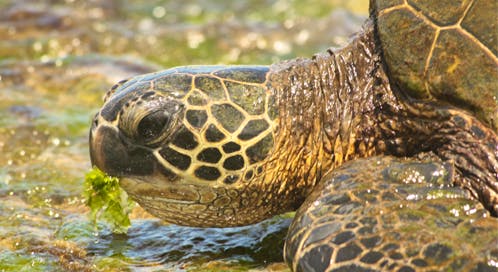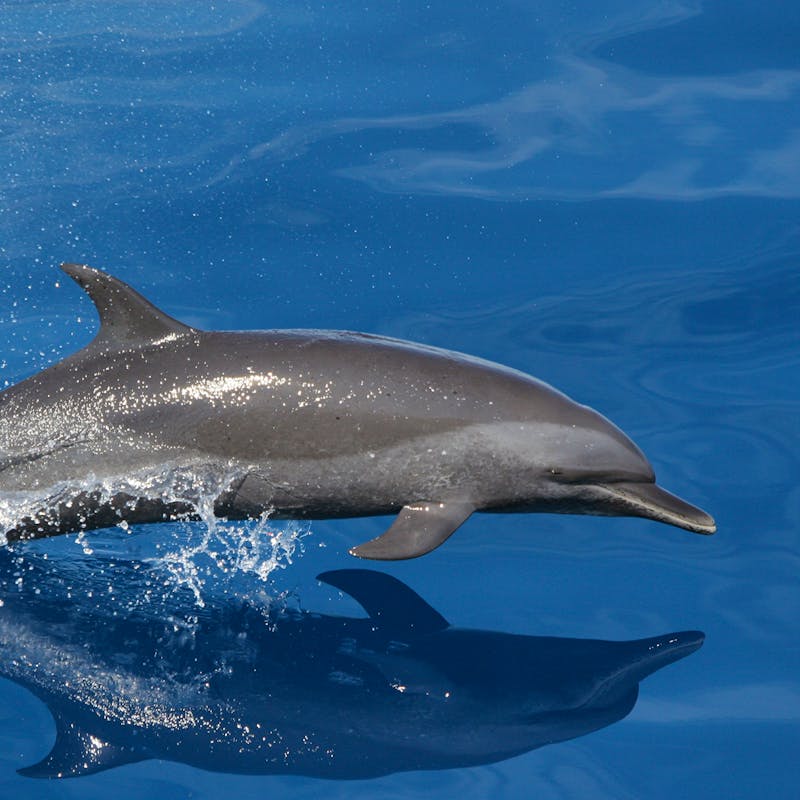In Florida, and in tropical and subtropical oceans around the world, years of conservation efforts are finally paying off
Some experts devote their entire careers to recovering a species, knowing that it may not be their generation but their children’s, or their grandchildren’s, that truly gets to see the results. But with Florida’s green sea turtles, we’ve been fortunate enough to see something truly remarkable.
In less than 40 years, this population of sea turtles has gone from nearly vanishing to laying thousands of successful nests on our beaches every year.
When Europeans first began exploring the Americas, they harvested green sea turtles for their meat and eggs, which had a massive impact on the species. By the time the turtles were protected under the Endangered Species Act (ESA) in 1978, populations had plummeted and Florida’s breeding population was listed as endangered. But that listing – under a law that was quite new at the time – was a turning point.
(story continues below)

A Network of Protections for a Species on the Move
Sea turtles are complicated. They spend most of their lives at sea, but when they do come ashore to nest, it’s vital that they can do so safely. Listing the species under the ESA meant federal agencies could put important protections in place for the turtles and their habitats, both on land and at sea.
In the short term, the ESA listing immediately made it illegal for people to harvest green sea turtles for food – the first and largest global threat (at the time) to their survival. Even so, with the turtles taking 20 to 40 years to mature, the benefits of this new protection wouldn’t be seen for decades. But in the meantime, there were plenty of other threats to address.
The listing also prompted state and federal agencies, scientists, fishermen and conservation groups to find a way to protect sea turtles from becoming bycatch – being caught by accident in commercial fishing gear or shrimp nets. Turtle Excluder Devices (TEDs) were invented to help turtles find their way out of shrimp nets – a big help to cutting down on bycatch and reducing drowning deaths in these air-breathing reptiles. These devices, along with other gear modifications, fishing methods and closures of key areas to fishing or shrimping when needed, helped protect green sea turtles within the country’s waters. And since 1989, the U.S. has prohibited the importation of shrimp harvested in other countries in ways that harm sea turtles.
Because green turtles spend different parts of their life stages in several other countries and on the high seas, ensuring that conservation measures are consistent has always been a challenge. But the ESA listing also gave federal agencies new authority to work to protect the species outside U.S. borders as well, enabling them to reach out to other countries to collaborate. Since then, several agreements and treaties have been put into place to help protect sea turtles wherever they are found. Much of the green sea turtle’s progress over the past few decades is a direct result of ESA protections in the U.S. as well as protections in other countries that are influenced by the species’ ESA status. The rebounding of Florida’s green sea turtle population is a testament to how effective these measures can be.

Focus on Florida
Green sea turtle nesting sites in Florida are among the best studied in the world – some have been monitored for more than 35 years! Most nesting takes place on sparsely-developed beaches with little to no artificial lighting, like Archie Carr National Wildlife Refuge, specifically established to protect crucial nesting habitat for sea turtles. When researchers started monitoring nests there in 1990, they found only 50 green sea turtle nests for the entire season. But as the new protections caught up with the sea turtles’ slow growth rate and late maturity, things started to improve, with marked nesting increases over the years. In 2013, nearly 12,000 nests were recorded on the same 20-mile stretch of beach!
State-wide, we have seen green turtle nesting grow exponentially. In 2013, biologists documented a record-breaking 36,000+ green turtle nests on Florida beaches. This level of success is possible in large part because of how far we’ve gone to protect nesting areas. Since the ESA listing, not just wildlife refuges like Archie Carr, but national and state parks, national seashores, and even military installations have protected important beaches to help secure a future for new generations of green sea turtles. Today Florida beaches provide the second-largest nesting area for green sea turtles in the wider Caribbean.
The Latest Milestone
Florida’s green turtles have come so far that the U.S. Fish and Wildlife Service and National Marine Fisheries Service have recently proposed to change their status from endangered to threatened, as part of a larger proposal to reclassify all green sea turtles into 11 groups (called distinct population segments). When a change in a species’ status is made too early or without adequate information, it can undermine recovery efforts. But when it’s warranted because the species has been making true progress, that is indeed something to celebrate. And in this case, we’re happy to report that Florida’s population of green sea turtles is indeed on the road to recovery.
It’s important to note that the proposal doesn’t include plans to reduce protections that this population still needs. We’re thrilled to see decades of conservation work finally paying off, and the green sea turtle showing signs of recovery in Florida. But at the same time, we know that we still have a great deal of work ahead.
Coastal development continues to grow, and sea level rise threatens even protected nesting beaches.
At sea, bycatch remains a major threat to green turtles in fisheries that do not use TEDs or other gear that spares turtles’ lives. Pollution degrades marine habitats and areas sea turtles rely on to forage for food. And legal and illegal harvest for meat and eggs continues in some countries. These and other threats to Florida’s green sea turtles remain – and it’s only by keeping adequate protections in place that we will continue to see green sea turtles regain their rightful place in Florida’s waters and on our shores.





